Anonymous
The name Orthoceras means "straight horn," referring to the characteristic long, straight, conical shell. These shells were divided into chambers, and the animal lived in the largest, outermost chamber. As the creature grew, it would add new chambers to its shell.
Orthoceras fossils are commonly found in Morocco. They are typically found in black limestone.
Large (2) L x W X D - 7" x 5" x 2"
Small (2) L x W X D - 5" x 2" x 1.5"
Further images
-
(View a larger image of thumbnail 1
)
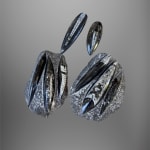
-
(View a larger image of thumbnail 2
)
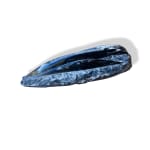
-
(View a larger image of thumbnail 3
)
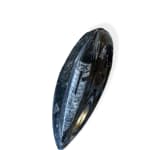
-
(View a larger image of thumbnail 4
)
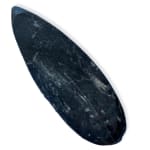
-
(View a larger image of thumbnail 5
)
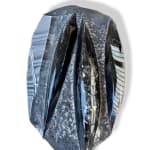
-
(View a larger image of thumbnail 6
)
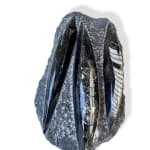
-
(View a larger image of thumbnail 7
)
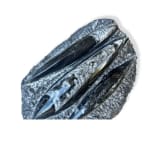
-
(View a larger image of thumbnail 8
)
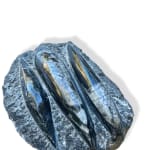
-
(View a larger image of thumbnail 9
)
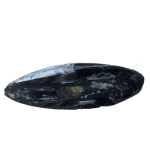
-
(View a larger image of thumbnail 10
)
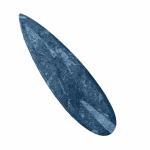
-
(View a larger image of thumbnail 11
)
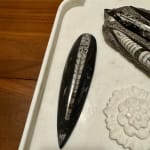
-
(View a larger image of thumbnail 12
)
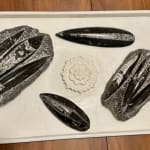
-
(View a larger image of thumbnail 13
)
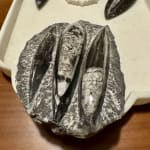
-
(View a larger image of thumbnail 14
)
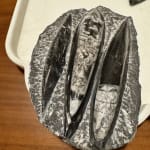
"Fossil - Morocco Orthoceras" presents a striking quartet of ancient marine life captured in polished black limestone. These remarkable specimens reveal the elegant internal chambers of prehistoric cephalopods, with their distinctive elongated conical shapes and pristine white segmentation patterns contrasting dramatically against the dark stone matrix. Each fossil displays the perfect mathematical precision of nature's design, with the chamber divisions clearly visible as white lines running perpendicular to the fossil's length. The artful presentation highlights both the textural contrast between the rough-hewn exterior and the smooth polished surfaces that reveal the fossils within, creating natural sculptures that bridge the gap between scientific specimen and artistic form.
About Artwork: Fossil - Morocco Orthoceras
These 2025-acquired Orthoceras fossils represent marine creatures that lived approximately 370 million years ago during the Devonian period. The set includes four pieces: two larger specimens measuring 7" × 5" × 2" and two smaller pieces measuring 5" × 2" × 1.5". Each fossil preserves the remains of ancient cephalopods-distant relatives of today's squid and octopus-whose name "Orthoceras" translates to "straight horn," referencing their distinctive elongated shells. The polished black limestone matrix provides the perfect backdrop for the white chambered structures, showcasing the evolutionary marvel of these creatures that added new chambers to their shells as they grew, with the animal inhabiting only the largest, outermost section.
Sourced from Morocco's rich fossil beds, these specimens transform any space with their dramatic visual appeal and profound connection to Earth's distant past. When displayed on a coffee table or shelf, they invite contemplation of time on a scale almost beyond comprehension-370 million years captured in stone-while their geometric perfection and natural artistry make them conversation pieces that bridge scientific curiosity and aesthetic appreciation.













